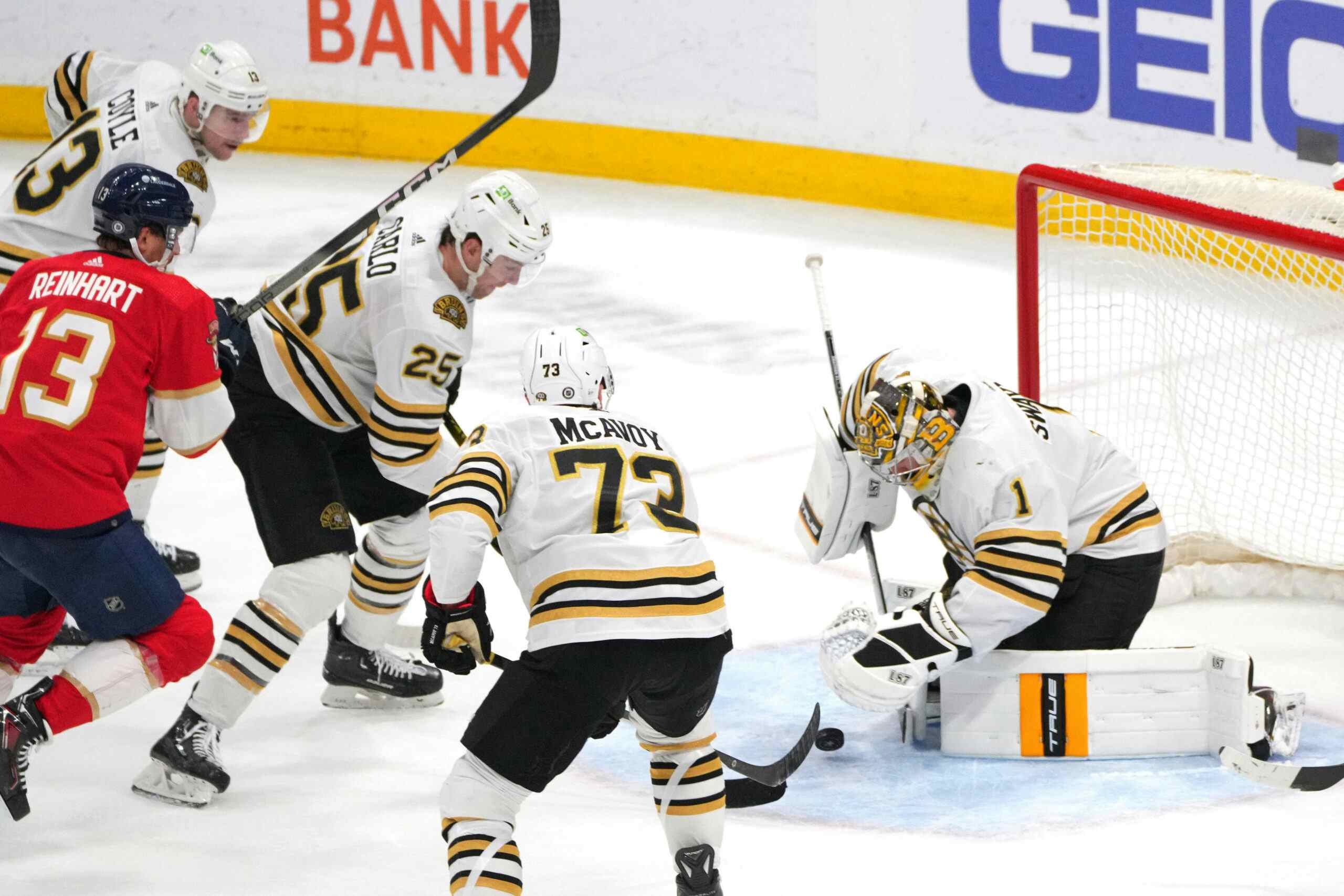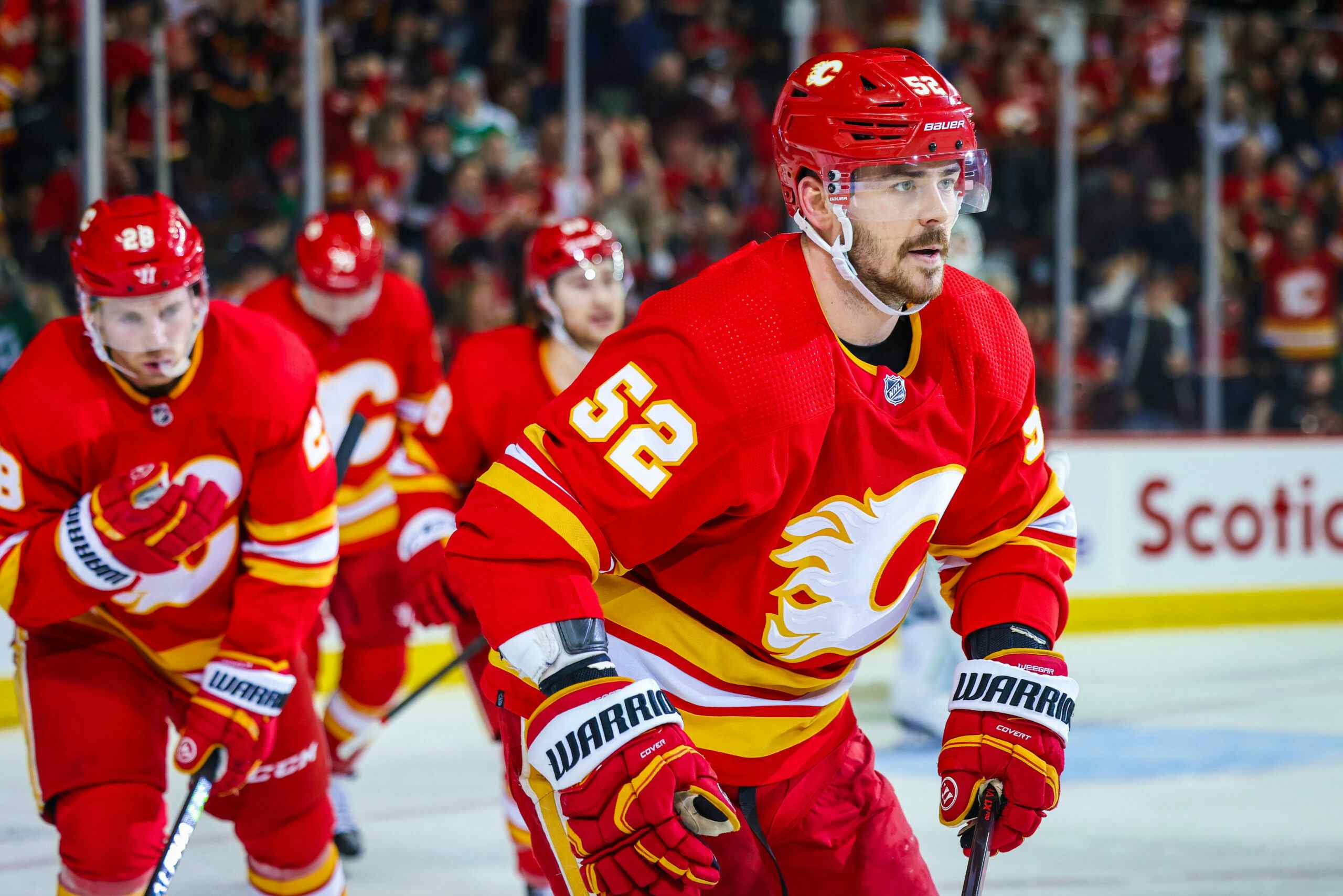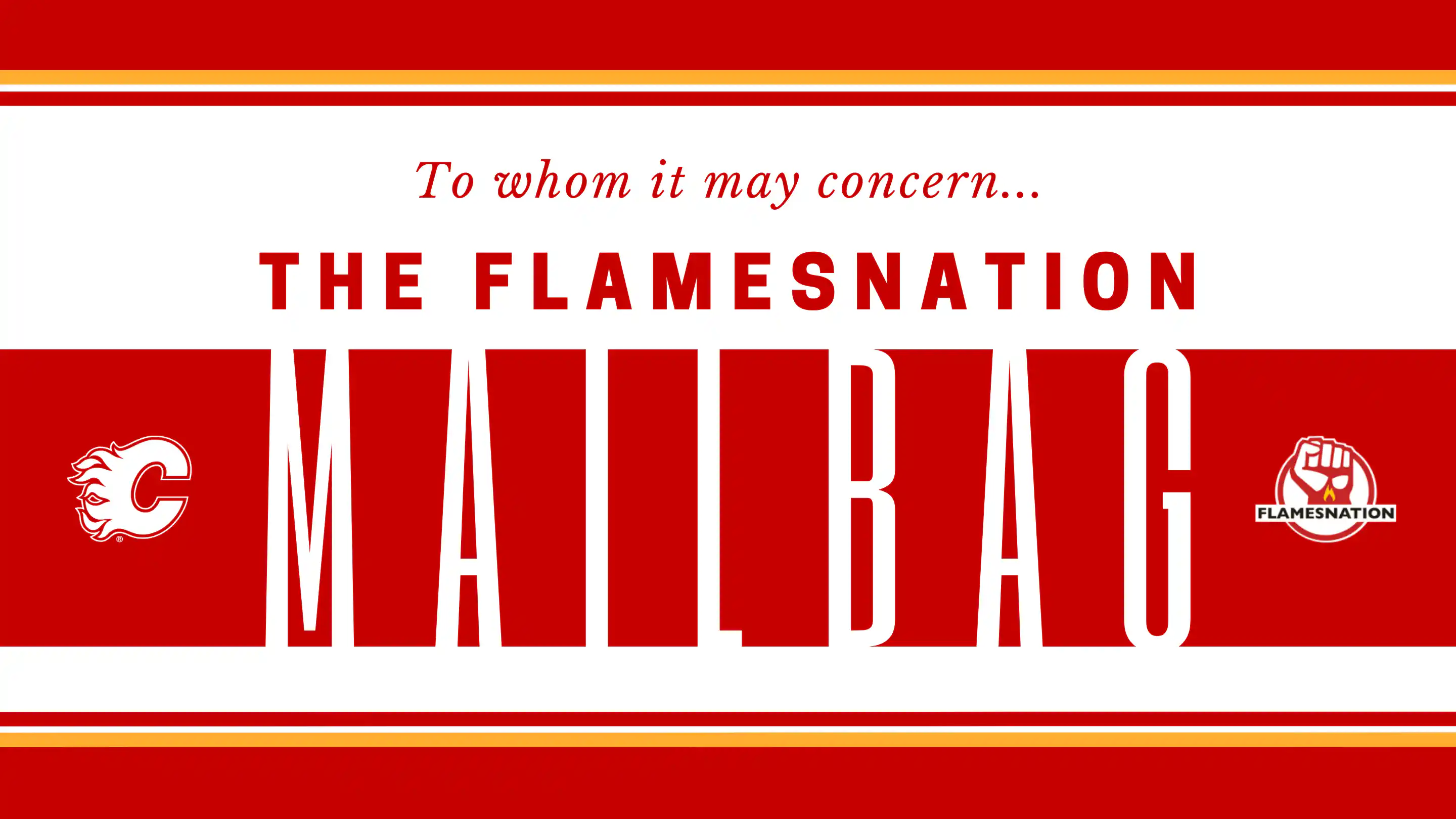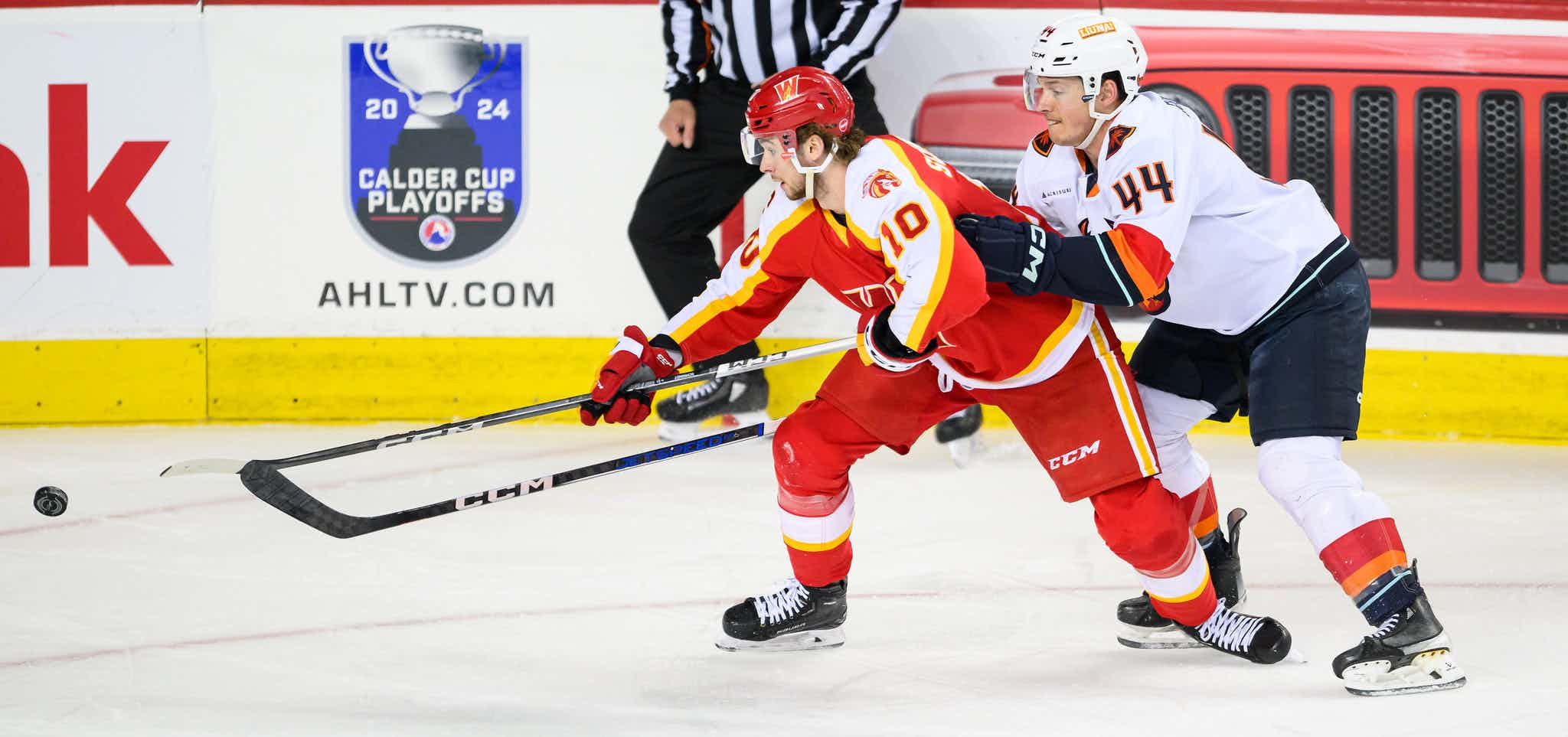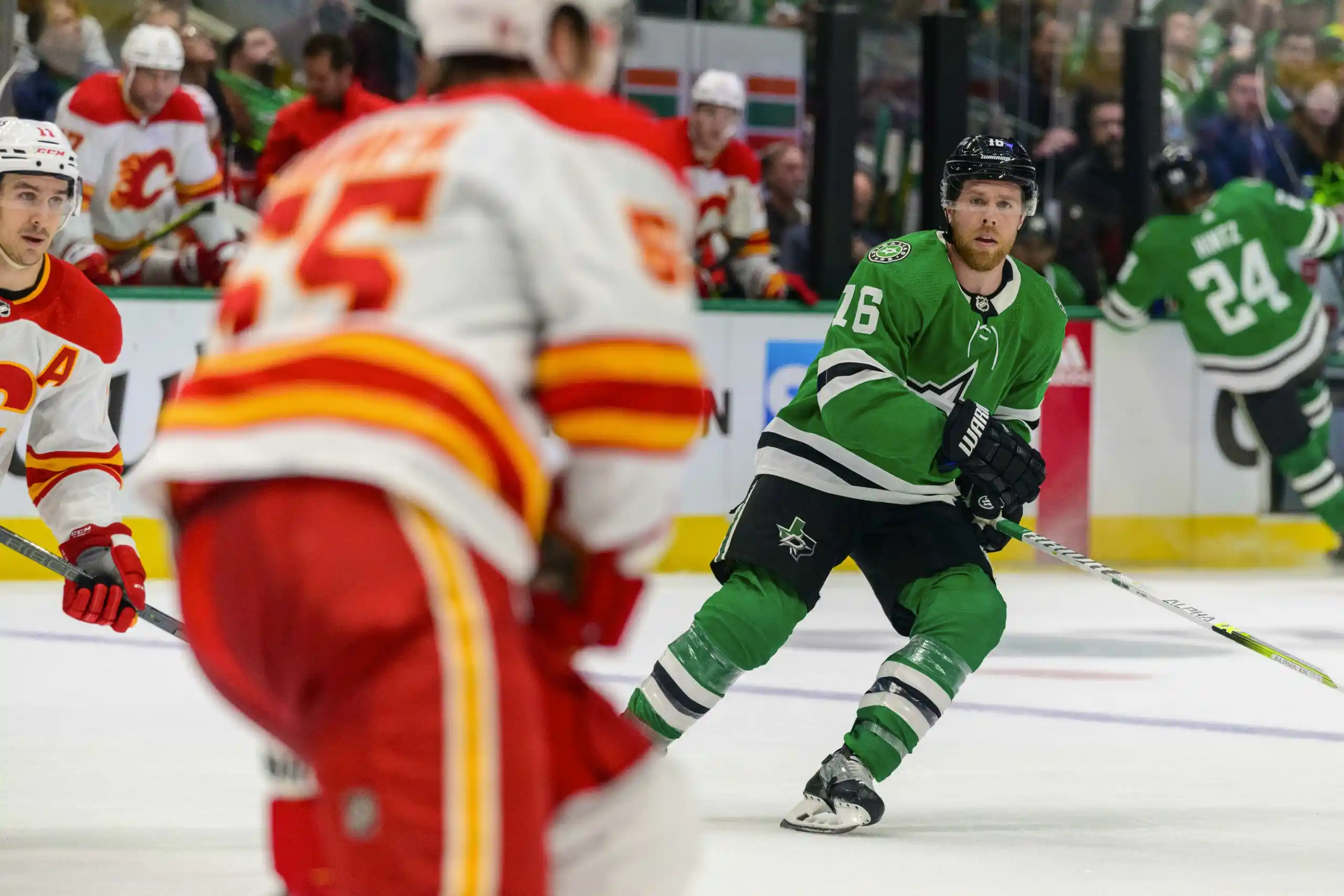We’re already learning how the Flames plan to use their forwards
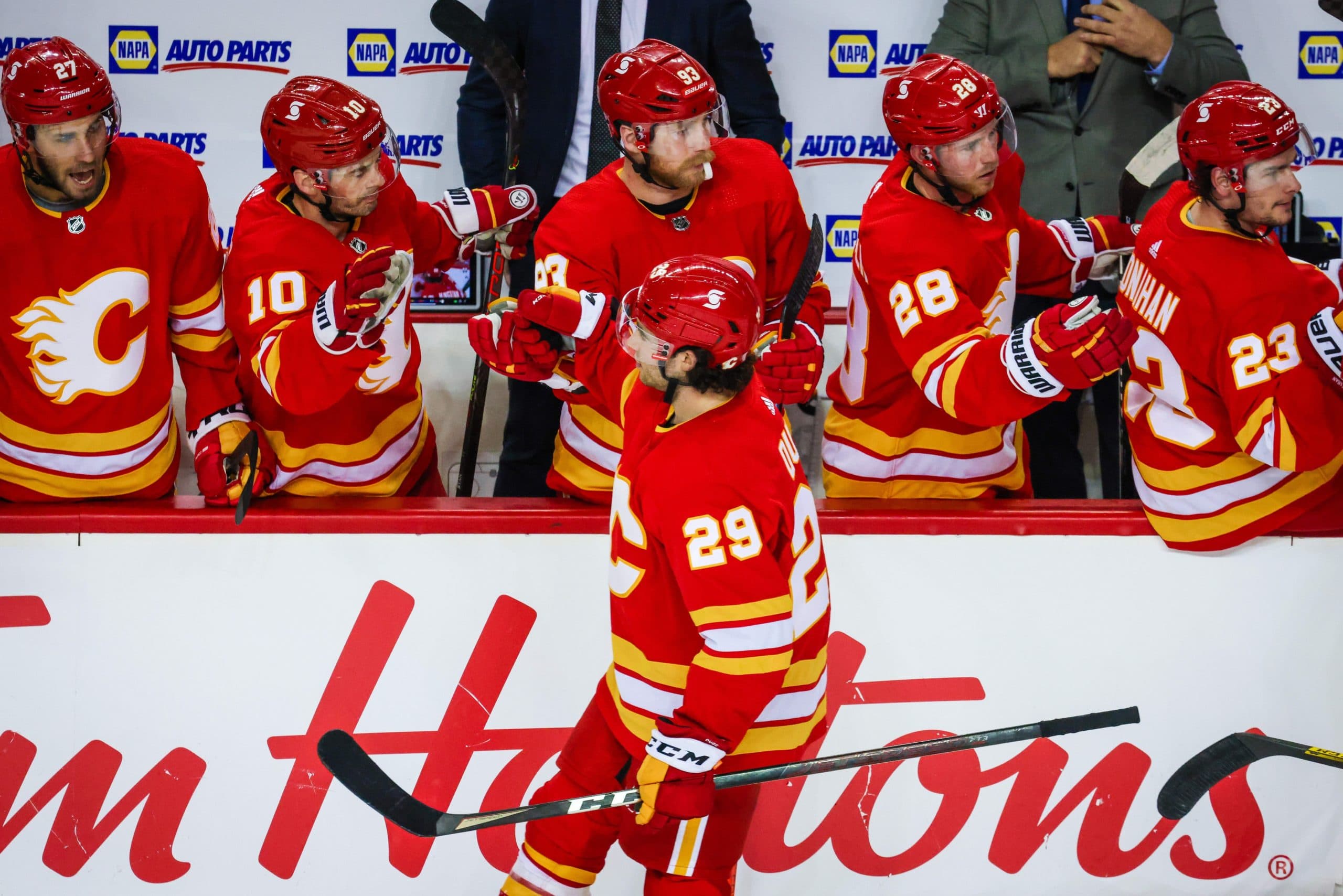
The Flames decided to re-think the way they use their forwards this offseason in an attempt to be harder to matchup against. Now three games in, the new approach has been relatively successful, albeit with a small sample size. That said, what we’ve seen early on gives us insight on how Calgary plans to use their forward group throughout the year. So far, things are trending in a positive direction.
“We’ve got a variety of different people that do a real good job away from the puck,” said head coach Geoff Ward when I asked him this week about his forward usage. “That allows us to do some more things with our starts, in terms of where guys are starting on the ice.
“Last year…we felt comfortable playing two lines against anybody else, which is what you sort of want. But we feel right now that we have the potential to play three lines against anybody else at any particular point in time. That gives us a little bit of an extra thing that we can play around with.”
The matchup lines
Elias Lindholm and Mikael Backlund have centred the team’s two heavy matchup lines thus far, which is to say they’ve handled the toughest assignments. Since being moved off a line with Johnny Gaudreau and Sean Monahan to start training camp, Lindholm has assumed the role of number one centre.
Now between Matthew Tkachuk and Dillon Dube, Lindholm has been treated as a number one by his team and opposing teams alike. A look at the line’s ice time distribution tells an interesting story. Plotted below is the opposing centre each player spent the most time against in each of Calgary’s first three games. All stats courtesy Natural Stat Trick.
| Player | Jan. 14 at Winnipeg | Jan. 16 vs. Vancouver | Jan. 18 vs. Vancouver |
| Elias Lindholm | Adam Lowry (5:21, 44.0%) | Bo Horvat (7:51, 65.9%) | Elias Pettersson (7:13, 73.1%) |
| Matthew Tkachuk | Adam Lowry (5:45, 41.9%) | Bo Horvat (7:55, 67.0%) | Elias Pettersson (7:22, 59.8%) |
| Dillon Dube | Adam Lowry (4:39, 40.3%) | Bo Horvat (8:18, 71.8%) | Elias Pettersson (2:55, 74.5%) |
In their only road game to date, Lindholm’s trio was treated as the team’s top scoring line. With last change, Jets head coach Paul Maurice used his shutdown duo of Lowry and Andrew Copp head-to-head as much as he could. The rest of the time, the Lindholm line saw Mark Scheifele and very little of Paul Stastny or Nate Thompson.
Essentially, whenever the Flames had their top line out there, it was either a power vs. power matchup or one against a top lockdown duo. Lindholm, Tkachuk, and Dube had by far the toughest responsibilities in Calgary’s lone road game so far, which is something we’ll likely see continue if they keep playing like a number one line. Aggregate three game outputs below.
| CF% | HDCF% | xGF% | OZS% |
| 63.2 | 66.7 | 56.5 | 45.0 |
The main difference in Calgary’s two home games is head coach Geoff Ward’s ability to use the Lindholm group in a top head-to-head role all night. With last change, Ward used his top trio mainly against one of Vancouver’s top two pivots: Horvat or Pettersson. If they keep performing at a high level, this is the desired usage at home for Dube, Tkachuk, and Lindholm, as it opens things up further down the depth chart.
Supporting the team’s top line is the duo of Backlund and Andrew Mangiapane with a number of different wingers on their right side. Backlund has long held the title as Calgary’s top shutdown centre, so it shouldn’t come as a surprise who he and Mangiapane have seen a lot of so far. We’re only using two games below, as this duo was broken up January 18th after Dillon Dube left in the second period.
| Player | Jan. 14 at Winnipeg | Jan. 16 vs. Vancouver |
| Mikael Backlund | Mark Scheifele (6:13, 46.0%) | Elias Pettersson (7:40, 59.8%) |
| Andrew Mangiapane | Mark Scheifele (5:52, 44.4%) | Elias Pettersson (7:36, 57.7%) |
The January 16th home game is what jumps out, especially compared to how the Flames used Lindholm the same night. While the top line was mostly occupied with Horvat, Backlund and Mangiapane saw shutdown duty against Van’s number one line driven by Pettersson.
With how successful we all know Backlund has been in this role before, it’s a crucial complement to how Calgary is using Lindholm’s line. By having two lines Ward can comfortably use primarily against the opposing top six, it frees things up for the team’s top offensive duo.
Gaudreau and Monahan
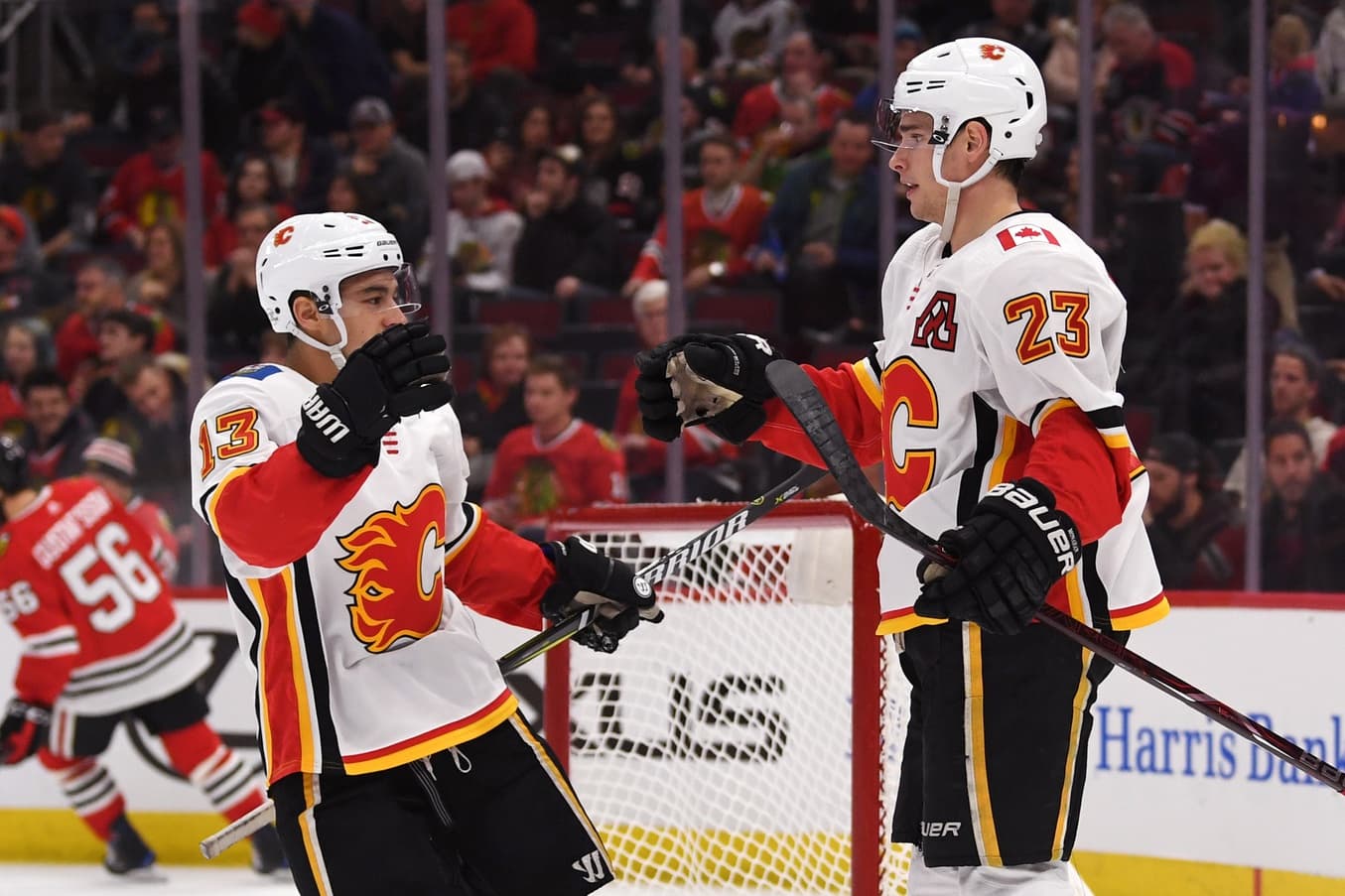
Much of the offseason narrative surrounded this duo after another disappointing playoff performance at five-on-five. While some wanted one or both of Gaudreau and Monahan moved out, the most sensible solution seemed to be enacting a different approach to their utilization.
General manager Brad Treliving targeted certain players in free agency to assist in moving Lindholm to the middle. Players like Dominik Simon and Josh Leivo were signed to give the Flames more depth on the right side. While Lindholm’s replacement on Monahan’s right flank remains a work in progress, you can already see how he and Gaudreau have been used differently.
| Player | Jan. 14 at Winnipeg | Jan. 16 vs. Vancouver | Jan. 18 vs. Vancouver |
| Johnny Gaudreau | Mark Scheifele (5:37, 39.7%) | Jay Beagle (4:28, 36.3%) | Jay Beagle (4:04, 41.9%) |
| Sean Monahan | Mark Scheifele (5:27, 38.5%) | Jay Beagle (4:37, 34.5%) | Jay Beagle (4:27, 44.7%) |
Let’s focus on the two homes games. With Vancouver’s top units occupied elsewhere, Calgary was able to get Monahan and Gaudreau out against Beagle, Tyler Motte, and Brandon Sutter most often, which is a matchup they’ll gladly take. While it wasn’t a hard-match situation in either game, it’s a positive trend. Monahan and Gaudreau saw a fairly even distribution against the other three lines in both games against the Canucks.
In home games, and to a lesser extent on the road, this approach gives the Flames more flexibility with their dynamic duo. Most importantly, it helps Calgary avoid situations like the 2019 playoffs where Colorado was all too happy to use Nathan MacKinnon head-to-head against them all series long.
So far, the outputs for Monahan and Gaudreau have been decent, especially compared to their struggles last season and in the bubble.
| CF% | HDCF% | xGF% | OZS% |
| 53.5 | 37.5 | 53.3 | 55.2 |
Interestingly, one thing we haven’t seen is a heavy dosage of o-zone starts for Gaudreau and Monahan. That’s something observed in similar setups for players like Patrick Kane, Phil Kessel, and Vladimir Tarasenko. But, as Hailey at The Athletic pointed out earlier this week, Gaudreau and Monahan in transition is where they’re most dangerous, as opposed to on the cycle. A more even distribution of starts likely suits them best.
It’s still early, which means results have to be taken with a grain of salt. That said, we’re already getting early clues on how the Flames want to roll their forwards. If lines centred by Lindholm and Backlund remain effective, Calgary can continue playing to the strengths of Monahan and Gaudreau. It’s my belief this will make the Flames more difficult to play against on a nightly basis and, most importantly, come playoff time.
Recent articles from Pat Steinberg

